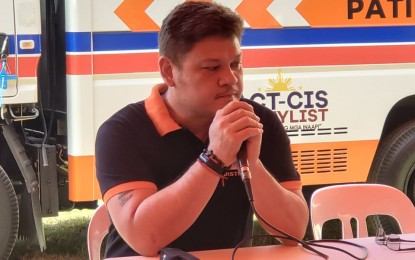
Davao City First District Representative Paolo Duterte. (PNA file poto)
MANILA – A lawmaker on Friday said the rehabilitation of the Agus-Pulangi hydropower complex (APHPC) should be a top priority of the Marcos administration to ensure a clean and reliable energy source in Mindanao while fighting climate change.
Davao City First District Representative Paolo Duterte said the rehabilitation project would initiate the transition process to low-emission energy sources and will contribute to the country’s commitment toward climate change adaptation and mitigation.
“If we want to be a global leader in climate action, we can start with rehabilitating the Agus-Pulangi power plants in Mindanao. This long-term measure will eventually reduce Mindanao’s reliance on coal, and accelerate our shift to clean energy sources,” Rep. Duterte said in a statement.
He made the remark in response to Finance Secretary Benjamin Diokno’s recent pronouncement before a high-level Group of Twenty (G20) forum that the Marcos administration will continue to pursue a “whole-of-nation” approach in mitigating climate risks and become a world leader in the fight against the climate crisis.
The rehabilitation project, he said, would also help fulfill President Marcos’s goal of developing more renewable energy (RE) sources to meet the country’s power generation requirements.
Under the government’s National Renewable Energy Program (NREP) 2020-2040, the Department of Energy (DOE) is targeting to increase the share of RE sources in the power generation mix to at least 35 percent by 2030 and to more than 50 percent by 2040.
He said the repair and rehabilitation of the Agus-Pulangi would ensure the reliability of the power supply in Mindanao “now and in the years to come.”
Composed of seven hydropower plants, the Agus-Pulangi complex has an installed capacity of 1,001 megawatts, but only 600 to 700 MW is available because of the limitations of its old facilities.
The APHC consists of seven mostly run-of-river hydropower plants with a total installed capacity of 1,001 MW.
Six of the seven hydropower plants are located along the Agus River which flows for 36.5 kilometers (km) from Lanao Lake to Iligan Bay.
The seventh hydropower plant is the Pulangi 4, located on the Pulangi River in Bukidnon.
In June, the Department of Finance (DOF) said it has been finetuning a proposed arrangement with the Power Sector Assets and Liabilities Management Corporation (PSALM) and National Power Corp. (NPC) on the funding rollout and implementation of the estimated PHP16.71-billion rehabilitation projects for the decades-old facilities in the complex.
Under the proposed memorandum of agreement (MOA), the DOF will be the main implementing agency, loan borrower and budget holder, and loan borrower for the rehabilitation projects.
The PSALM and NPC, as owner and operator, respectively, of the APHPC will both serve as the implementing units.
Divided into two projects, the first series will involve the rehabilitation of the Agus IV, V, VI, and VII plants in the APHPC, which is expected to generate a total rated capacity of 417.1 megawatts.
The second series will rehabilitate Agus I, II, and the Pulangi IV plants, which will generate a total rated capacity of 515 MW.
The Series of Project (SOP) 1 is estimated to cost PHP10.19 billion, while SOP 2 is about PHP6.52 billion, based on a study done by the World Bank (WB).
The rehabilitation of the APHC plants is among the major projects of then-President Rodrigo Duterte that was turned over to the current administration. (PNA)
